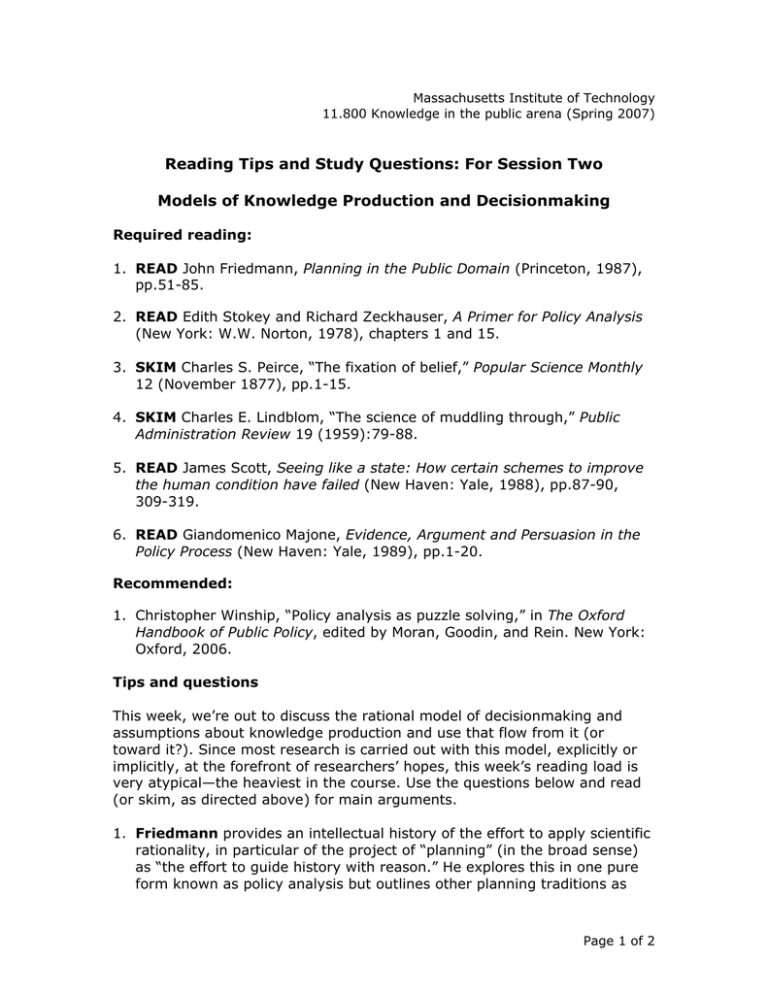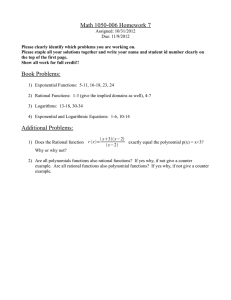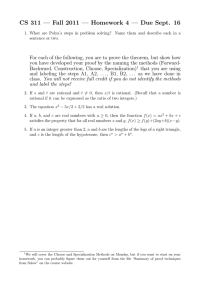Reading Tips and Study Questions: For Session Two
advertisement

Massachusetts Institute of Technology 11.800 Knowledge in the public arena (Spring 2007) Reading Tips and Study Questions: For Session Two Models of Knowledge Production and Decisionmaking Required reading: 1. READ John Friedmann, Planning in the Public Domain (Princeton, 1987), pp.51-85. 2. READ Edith Stokey and Richard Zeckhauser, A Primer for Policy Analysis (New York: W.W. Norton, 1978), chapters 1 and 15. 3. SKIM Charles S. Peirce, “The fixation of belief,” Popular Science Monthly 12 (November 1877), pp.1-15. 4. SKIM Charles E. Lindblom, “The science of muddling through,” Public Administration Review 19 (1959):79-88. 5. READ James Scott, Seeing like a state: How certain schemes to improve the human condition have failed (New Haven: Yale, 1988), pp.87-90, 309-319. 6. READ Giandomenico Majone, Evidence, Argument and Persuasion in the Policy Process (New Haven: Yale, 1989), pp.1-20. Recommended: 1. Christopher Winship, “Policy analysis as puzzle solving,” in The Oxford Handbook of Public Policy, edited by Moran, Goodin, and Rein. New York: Oxford, 2006. Tips and questions This week, we’re out to discuss the rational model of decisionmaking and assumptions about knowledge production and use that flow from it (or toward it?). Since most research is carried out with this model, explicitly or implicitly, at the forefront of researchers’ hopes, this week’s reading load is very atypical—the heaviest in the course. Use the questions below and read (or skim, as directed above) for main arguments. 1. Friedmann provides an intellectual history of the effort to apply scientific rationality, in particular of the project of “planning” (in the broad sense) as “the effort to guide history with reason.” He explores this in one pure form known as policy analysis but outlines other planning traditions as Page 1 of 2 well. Focus on the main arguments, not the details of every thinker in the narrative. What key historical developments, according to Friedmann, were friendly to the emergency of the idea of rational planning? Which developments challenged it? (Note that the PDF on The MIT Server may include additional pages, which are not required as prep for our session.) 2. The rational planning or rational policy model: Based on StokeyZeckhauser, what is the main purpose of the rational model, also known as the model of “instrumental rationality”? What does it assume? 3. Skim Peirce, an oldie but goodie. Though written a hundred years before Stokey-Zeckhauser, Peirce’s essay conveys skepticism about the power of evidence to change people’s minds. Put differently, Peirce was not convinced that people decide based on evidence, a core tenet of the rational model and an idea that cognitive psychology has challenged repeatedly in recent decades. 4. Why exactly, according to Lindblom, is the rational model “impossible” to use except in rare cases of decisionmaking? What factors shape an alternative model of “successive limited comparisons”? 5. According to Scott, how is local knowledge or “metis” different from instrumental rationality? What unique value does local knowledge have? 6. What does Majone’s concept of decisionmaking through argumentation— including “the institutionalization of discussion” and the role of decisionmaking skill versus technical knowledge about subject matter— add to our understanding of the rational model and its limits? Page 2 of 2






